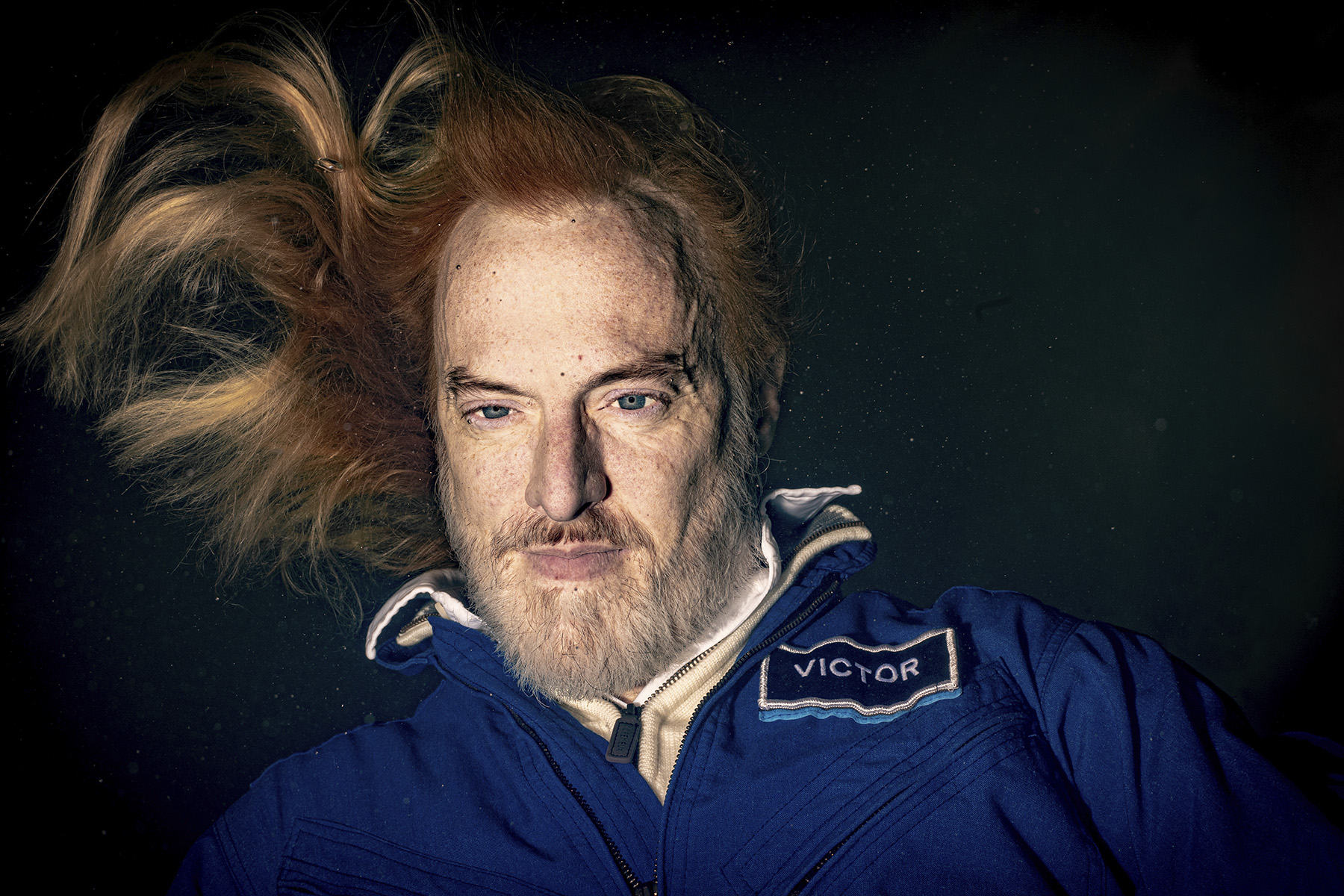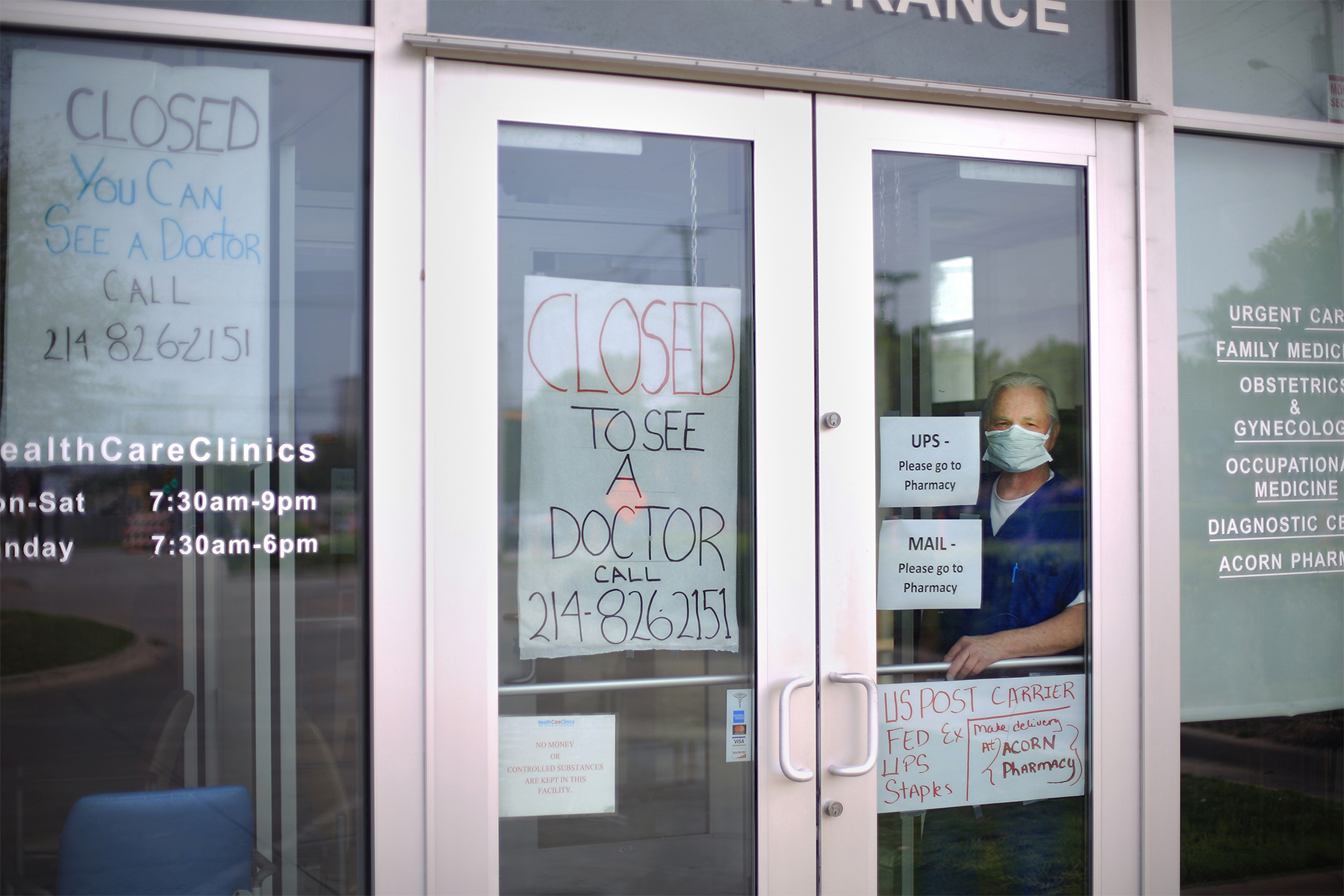Tim Rogers
Editor, D Magazine
 Dangit. I have two children. This is like asking me to pick my favorite of the two. I DO have a favorite. All parents have a favorite child. Don’t let them tell you otherwise. But saying it out loud creates problems. So let’s do it. In no particular order:
Dangit. I have two children. This is like asking me to pick my favorite of the two. I DO have a favorite. All parents have a favorite child. Don’t let them tell you otherwise. But saying it out loud creates problems. So let’s do it. In no particular order:
Kathy Wise is awesome. Only she could pull off this profile of Jessica Stampley, the executive chef at Bonton Farms. It’s about food, sure. But it’s also about race and sexism and making mistakes as a journalist. I’m not exaggerating when I say D Magazine is the only publication in Dallas that can do stuff like this. It makes me proud to work here.
The title of this story: “The Three Most Offensive People in Richardson.” I wrote it. Whatever. It’s not a particularly great story. (It’s great, just not particularly great.) But I think it’s the best headline of any story we published this year. For that reason alone, you should read the story.
Zac Crain’s profile of Mike Rhyner. Zac won a major award not long ago, and the judges called him “the master of the profile.” We kid him around the office about being the master of the profile. But it’s true. Dude can write a profile. And I’m a huge Ticket P1, so this one is special for me.
Peter Simek went deep on the Highland Park drug ring that was pumping Xanax into North Texas. It’s a crazy tale that involves a family of 10 children and high school football and a murder in the parking garage at the Shops at Park Lane. He did some serious reporting here.
Eve Hill-Agnus wrote about the collapse of Nick Badovinus’ restaurant just as the pandemic started. She elegantly captured a moment in time. I remember reading this story in the editing process and being so impressed. It is sad and wonderful.
Did we really send Peter to Borneo to profile Rob Allyn? Yes, we did.
OK, so this seems unfair. Because Peter got to go to Borneo for his story, but Matt Goodman didn’t get to go to the bottom of an ocean for his profile of Victor Vescovo. On our cover, we called Vescovo the most interesting man in Dallas. Prove me wrong. The St. Mark’s grad built a submarine that took him to the bottom of every ocean on the planet. Also, we photographed Vescovo underwater. I think that was a first for D Magazine.
Julia Heaberlin used to be my boss. She has seen me cry. Then she wrote a story for us about a guy named Randy Trawnik who makes some of the best prosthetic eyes in the world.
The woman who owns D Magazine, Christine Allison, said this is the funniest thing that has ever been published in the magazine. I’d be stupid to disagree.
Another story about drugs in the Park Cities. Another banger by Kathy. This one is about the woman who owns the Gas Pipe.
For me, 2020 will be the year we landed Jim Schutze. I think I had my first conversation with him about writing for the magazine 15 years ago. Who’s counting? Anyway, the Dallas Observer cut him loose, and we signed him to be a columnist. The first thing he wrote for us was about the George Floyd protests in the streets of Dallas.

Christine Allison
President and CEO, D Magazine
 This end-of-year assignment—pick your favorite D Magazine stories of 2020—always makes me sweat, though I asked to participate so I should shut up. Just sayin’: it’s a challenge to rifle through a year’s worth of amazing editorial and narrow it down to just a few selections. But here, from the 2020 D Magazine treasure chest, are pieces I really loved.
This end-of-year assignment—pick your favorite D Magazine stories of 2020—always makes me sweat, though I asked to participate so I should shut up. Just sayin’: it’s a challenge to rifle through a year’s worth of amazing editorial and narrow it down to just a few selections. But here, from the 2020 D Magazine treasure chest, are pieces I really loved.
“How to Load A Dishwasher“ by T.C. Newby (not his real name) (don’t ask)
It starts off like this: “As we all know, the world can be divided into two types of people: those who know how to load a dishwasher properly and those who, I swear to God, are just itching for a divorce.”Depending on what type of person you are, you will find this the most rewarding essay you have ever read in your life.
Handmade by Kathy Wise, photography by Elizabeth Lavin, design by Hamilton Hedrick
You know how food tastes better when made with love? This has been scientifically proven. Kidding. But D Magazine Executive Editor Kathy Wise made “Handmade” during the summer of 2020, a cookbook made with love, and from the recipes I’ve tried, food made from cookbooks made with love tastes better, too. The recipes all are pick-up food, easy to serve during *these times* to friends and family. But I’ll be using it forever. Buy your copy here (or give as a gift, it’s such a cool Dallas community cookbook).
Tim Rogers’ Letter from the Editor’s pages: This is a *subscriber exclusive*. Which is why you need to subscribe right now. Seriously, drop everything and do it because if you don’t subscribe to D Magazine, you are making quality of life decisions without the information you need. You might even think Dallas is boring and it totally is not. It’s only boring if you don’t read our magazine.
Plus, if you’re not a subscriber, you don’t get a letter from Tim Rogers that sometimes will make you laugh, and sometimes make you cry, and always cause you to love Dallas a little more. Also, Wick Allison told me to always be selling, so do me a solid and buy a sub. I mean, why not?
“A New Report Shows the Destructive Effects of Traffic Tickets on the Poor“ by Zac Crain
The title of this article could also have been “A New Report Shows the Destructive Effects of Traffic Tickets on Dallas Taxpayers.” Here’s why you should read this short piece: 1) Texas ranks 50th in the U.S. for ability to collect fines and fees. It costs us 41 cents to collect a dollar, and we rely on this money to fund our parole system. Dumb. 2) This misguided effort to generate revenue, in many cases from the empty pockets of poor people, often ends up with us jailing those who can’t pay, crediting them $75 to $100 for each night in jail.
Taxpayers — you/me — pay in the neighborhood of $80 to house them and provide three squares a day. Oh, and now these people’s lives are disrupted, they miss work, they’ve got a record now, making it harder them for provide for themselves and their families. Pointlessly cruel. Also very dumb. 3) Fines and fees do not move the needle on public safety. Arresting people for an expired license takes precious time from the important work police have to do, and also puts a ridiculous burden on probation and parole officers, who end up being glorified collection agents.
I learned all of this from a presentation by the Federal Reserve of Dallas. Very disappointed in the Tea Party for not making this a priority.

Kathy Wise
Executive Editor, D Magazine
 Two of my favorite features came out early in the year, in February. The first was “Into the Deep,” Matt Goodman’s profile of Victor Vescovo, the Dallas millionaire who decided to become the first to venture to the bottom of the world’s five oceans. It’s a challenge to know where to start the action when you have a high-tech submarine and the globe at your disposal, so Matt sent me the lede early on in his writing process to see if I thought it worked. It was brilliant:
Two of my favorite features came out early in the year, in February. The first was “Into the Deep,” Matt Goodman’s profile of Victor Vescovo, the Dallas millionaire who decided to become the first to venture to the bottom of the world’s five oceans. It’s a challenge to know where to start the action when you have a high-tech submarine and the globe at your disposal, so Matt sent me the lede early on in his writing process to see if I thought it worked. It was brilliant:
Victor Vescovo sat down at the kitchen table in his Preston Hollow home in September 2014 and wrote a very expensive email. He needed something to do. He’d spent the past 26 years of his free time climbing the highest mountain on each of the seven continents. He’d had a couple of close calls that warranted second tries: frostbite on Everest, altitude sickness on Kilimanjaro, a rock slide down Aconcagua, in South America, that could have paralyzed him. But he eventually—stubbornly—made it to the top of them all. He then skied both poles, becoming the 38th person ever to conquer the so-called Explorers Grand Slam.
Now, for the first time in his adult life, he had nothing to do but go to work at his private equity firm in Southlake.
My other favorite from that same issue was “On Island Time,” Eve Hill-Agnus’ deep dive into the city’s Filipino pop-up explosion. Her insights, paired with staff photographer Elizabeth Lavin’s spectacular portraits, created an intimate behind-the-scenes look at one of Dallas’ most exciting food trends.
It was hard to keep up with the prolific output of Peter Simek and Zac Crain throughout the year, but I have a favorite from each of them as well. For Peter, it has to be “Rob Allyn’s Journey to the Edge of the Earth” from the March issue. Only Peter could find a way to hang out in Borneo before the world shut down with Jonathan Rhys Meyers and a filmmaker who, as the subhed notes, “helped George W. Bush become governor of Texas and led Vicente Fox’s Mexican revolution.”
For Zac, I’m going to pick one that I have a feeling no one else will single out: “Boban the Great” from the May issue. He wrote the profile of the Mavs’ 7-foot-4 center, Boban Marjanović, in March, and he turned in the final copy about a week after we started working from home. Things were chaotic and emotional to say the least. I’m not particularly passionate about basketball, and I knew nothing about Boban before I read the story, but I found myself in tears by the end. Here’s what I texted Tim after I read it: “You know why I love Zac’s story? I think it’s this feeling right now that in this quiet, scary time of global pause, that the flashy glory is gone. And what we have now is a hard slog. And we need to embrace that slog and stay in shape for the fight. Because we are all going to need to be heroes in small unsung moments with our families and friends and neighbors, each being the one to run in with a broom handle and then return to the bench. And that’s ok. That’s this life. And if we can manage to keep smiling and caring, we will maybe be ok.”
I’m getting teary all over again, just being reminded of how many COVID-19 tests, sweaty backyard meetings, and snippy Microsoft Teams arguments went into producing some incredible work over the last 12 issues. I’m so proud to be a part of this team.

Matt Goodman
Online Editorial Director, D Magazine

So much of my year was spent at the dining room table in the thousand square feet in which I share with my wife that months were hard to separate. Being privileged enough to work from home during the pandemic also meant that the things that ground me in the month, week, day—drives, the office, in-person interviews, Council meetings at City Hall, meals, coffees, concerts, bars, whatever—vanished in the middle of March and didn’t come back. Zoom and phone calls mixed everything together like mud, making it difficult to tell April from October.
So going back through D in print and online was a helpful exercise. I start with Eve Hill-Agnus, whose review of Desert Racer was upended during production of the May issue, which would’ve been, oh, a week after the pandemic reached us. I was with her on one of those visits in late February, sharing Jonah crab dip and passing a swirled margarita around the table. I enjoyed so much of Eve’s work this year, but a lot of it was after restaurateurs changed everything. This Desert Racer piece was done during the panic when the new restaurant had to shift, and so did the writer. It was a thrill to read her reconcept a review into something new.
Peter Simek had a similar start to the pandemic. I loved his column on Judge Clay Jenkins, “How To Manage a Pandemic from Home,” which gave us more of an insight about the county’s operation early on. He followed that column with “A Mayor in Defeat,” which recounted Mayor Eric Johnson’s first year in office and how differently he had handled the pandemic from the city’s side. It shaped much of our coverage of City Hall this year, particularly the mayor’s still-fraught relationship with our city manager.
I’m proud of our coverage of the uprising against police brutality. I am honored to run essays from Jerry Hawkins, of the nonprofit Dallas Truth, Racial Healing and Transformation, and Byron Sanders of Big Thought. Read those if you haven’t, and revisit if you have. I couldn’t keep young Trace Miller off the streets for months, and our coverage was all the better for it. Miles Hearne’s photography added so much to our journalism, too. I believe that Tim Cato’s first-person accounting of being corralled on the Margaret Hunt Hill Bridge brought important accountability to the matter. He said he was tear gassed when the department was saying the opposite, and I remain glad that we made the decision to counter the police narrative and trust his experience.
Zac Crain, in many ways, has dedicated his last few professional years to understanding and communicating the messages that important activists and faith leaders have fought for years to bring to the forefront in this city. His profiles have illuminated people like Michael Waters, Omar Suleiman, and Ernest McMillan in ways no other publication has. He did it again this year with Sara Mokuria, the co-founder of Mothers Against Police Brutality. His profile highlights what activists risked their lives to fight for this year, locally and elsewhere, told through the story of one of the most important figures in the movement.
In a similar vein, Kathy Wise’s profile of Bonton Farms chef Jessica Stampley was the sort of frank, narrative discussion of race that we need more of: “But, as it turns out, when a White lesbian journalist talks to a White man and his Asian American wife about a quiche baked by a multiracial chef in a cafe they founded in a historically Black neighborhood, things get complicated.” And speaking of Kathy, she authored an entire damn cookbook during the pandemic! And it’s amazing! Elizabeth Lavin’s photography and Hamilton Hedrick’s design will make you pick it up again and again.
And I’d be remiss if I didn’t mention the online work of our online editors. The magazine has a six-week lead time, making it tough to stay on top of the stories of the moment. Rosin Saez followed scrappy nonprofits and cash-strapped restaurateurs who stepped in to help when the government wouldn’t. She and Eve spoke with waitstaff when they were called back to work and bar owners who were trying to decide what is safe and what wasn’t. Emily Heft and Natalie Gempel switched gears to help people exercise, craft, and perform/watch indoors. Emily found a ton of interesting people doing interesting things despite the pandemic.
Speaking of the pandemic, I remain incredibly proud of this publication’s take on Best of Big D. We scrapped what we usually do—in my mind, if you’re a local business that sold burgers this year, congratulations, you sold the best burger—and highlighted all the people who are doing their best to volunteer to help one another. It will be another time capsule of a year like no other, when the city jumped in to help their neighbors.
I’ll wrap this up with Wick Allison. We knew for years that our founder and leader was dying, but the finality of it wasn’t something anyone could prepare for. And it was worse because we were apart. Tim Rogers’ obituary—which had not been prepared until the night before—is a remarkable tribute to a complicated man, and the 212 comments that sit below it serve as a virtual wake for someone who made a mark on this city like few others.
Wick was proud of D this year, and I think he would’ve been delighted to know that we set audience records in 2020. I thank y’all for coming along. Here’s to next year, when we do it all over again. Let’s just hope I’ll be writing this in an office by then.
Zac Crain
Senior Editor, D Magazine

“Life in the Time of COVID-19“ by Dylan Hollingsworth
I was pleased that we could provide a home for Dylan Hollingsworth’s series of interviews and portraits, providing a sort of literal snapshot of what the pandemic meant to Dallas in its early stages. We could have, unfortunately, run another version months later—maybe a couple of updates, honestly.
“Race and Quiche“ by Kathy Wise
“But, as it turns out, when a White lesbian journalist talks to a White man and his Asian American wife about a quiche baked by a multiracial chef in a cafe they founded in a historically Black neighborhood, things get complicated.” LOL. Kathy Wise did a wonderful job with this story, especially with the vulnerability it takes to admit a blindspot, which too few are willing to do.
“The Man Who Paints Souls“ by Julia Heaberlin
This is one of those ideas—profiling the local man who makes the world’s best prosthetic eyes—that made me outwardly angry I didn’t get to first. But I doubt I could have done as well with it as Julia Heaberlin did.
“Into the Deep“ by Matt Goodman
The hardest thing to do is tell a story that people think they’ve already heard before. So Matt Goodman pulled off a neat trick in his profile of explorer Victor Vescovo.
“The Incredible, Unsurprising Story of Dallas’ Dining Community Rallying Behind a Chef in Need“ by Eve Hill-Agnus
I also really liked Eve Hill-Agnus’ piece about Justin Holt and Salaryman and Dallas’ dining community in general. A nice way to pay tribute to an industry that has suffered as much as any other this year.
Peter Simek
Senior Editor, D Magazine
 I read that some film critics are forgoing their “worst of” lists this year. That makes sense. There’s something about 2020 that makes the idea of ragging on anyone’s hard work unpalatable, plus the film studios didn’t roll out their usual schlock that ends up on these kinds of lists. I feel similarly about the idea of a D Magazine best of this year. It is difficult to single out a few highlights from such a strange and challenging year. Where our little publication demonstrated greatness this year was in the staff’s incredible endurance, resourcefulness, and ingenuity. The reality is every magazine – every article – we produced this year felt like one of this magazine’s greatest accomplishments.
I read that some film critics are forgoing their “worst of” lists this year. That makes sense. There’s something about 2020 that makes the idea of ragging on anyone’s hard work unpalatable, plus the film studios didn’t roll out their usual schlock that ends up on these kinds of lists. I feel similarly about the idea of a D Magazine best of this year. It is difficult to single out a few highlights from such a strange and challenging year. Where our little publication demonstrated greatness this year was in the staff’s incredible endurance, resourcefulness, and ingenuity. The reality is every magazine – every article – we produced this year felt like one of this magazine’s greatest accomplishments.
But some traditions are worth keeping, even in strange years like this one. And with that, here are a handful of pieces I believe warrant particular commendation.
“The Last (and Best) Story Ever Written About Mike Rhyner” by Zac Crain
The radio legend sure picked a serendipitous moment to take his final bow. What I loved about Zac’s feature is that it manages to reveal so much about a man whose charm and celebrity stemmed from the way he mastered a medium that already made him feel like an intimate to all the thousands of people who regularly tune into the Ticket.
“The Horrible Truth of Love Field’s Texas Ranger Statue“ by Doug J. Swanson
In recent years, this country has been coming to grips with the ways in which the nation’s troubled history – and the monuments we have erected to celebrate and interpret aspects of that history – have helped to enshrine a legacy of racism and hatred. Part of the role of journalism is to unpack these cultural complexities. Sometimes, as with Doug Swanson’s piece about the Texas Ranger Statue in Love Field, unpacking the past can lead to change. After the piece was published, the airport decided to remove the statue.
“Life Behind a Mask in UT Southwestern’s COVID Unit“ by Matt Goodman
Part of what made 2020 feel like such a nightmare was the way the same handful of storylines seemed to play out simultaneously in every community across the globe. “Frontline workers” was the new term that emerged to describe the courageous, selfless men and women who staffed our health care system during this horrifying historical moment. In August, Matt and Elizabeth teamed up to produce a riveting and candid portrayal of life on the frontlines of the pandemic as it played out in our city.
“Dallas City Council Christmas Sweaters 2020: Who Wore It Best“ by Tim Rogers
The year in local politics has largely been defined by contention, in fighting, political maneuvering, and Zoom. So, levity was welcome when some – but not all – of the city council donned their ridiculous sweaters for the last meeting of year, creating an opportunity for Tim to hilariously skewer our local officials.
The Whole Damn SideDish Blog
How do you cover the food scene when all the restaurants are closed? That was the question that faced our team of intrepid dining critics back in March. As 2020 unfolded, the ongoing trials and travails of the local food scene became about so much more than closings and regulations. Eve and Rosin’s coverage documented the ways in which chefs, restaurateurs, and service industry workers struggled to cope with a changed world, while managing to harvest joy and delicious moments from a dining year defined by unprecedented challenges.
R.I.P., Wick Allison
Given the strangeness of 2020, I don’t think we’ve all fully come to terms with what making D Magazine without Wick Allison really means. His loss is something that will stay with us even after the cloud of 2020 and the pandemic finally lifts. But at 212 delightful, hilarious, tear-inducing comments – and counting – the FrontBurner sendoff to this magazine’s heart and soul was a community-sourced tribute befitting the great man.

Eve Hill-Agnus
Dining Critic, D Magazine
 As the dining critic, I have to say “Stranded,” my Desert Racer review and my story about John Tesar’s wild, bold gamble to sell dry-aged steaks out of a shuttered restaurant. The culinary industry was upended this year, and my job as I knew it disappeared. These articles were some of the most real writing I’ve gotten a chance to do.
As the dining critic, I have to say “Stranded,” my Desert Racer review and my story about John Tesar’s wild, bold gamble to sell dry-aged steaks out of a shuttered restaurant. The culinary industry was upended this year, and my job as I knew it disappeared. These articles were some of the most real writing I’ve gotten a chance to do.
A profile on Victor Vescovo combined Matt Goodman’s writing with freelancer Jeremy McKane’s photography for a read that had us underwater (literally—those shots!) and exploring the depths of the world’s five oceans—the Challenger Deep, the Puerto Rico Trench, South Sandwich Trench, Java Trench, and Molloy Hole.
The Field Guide to Dallas , called “Trailblazing” in the magazine, with Bill Holston’s trail recommendations and nature maven Cynthia Mulcahy’s intricate, gorgeous watercolors of birds and insects became more of a savior than anyone could have imagined in a year when trails became freedom and escape from our 750-square-foot work-from-home spaces. I don’t think that was just me.
In August, “Life Behind a Mask” gave us a glimpse of the COVID-19 unit at UT Southwestern. A combination of Matt Goodman’s writing and Elizabeth Lavin’s photography in a gripping piece that made it real.
From the opening paragraph, Zac Crain’s profile of Sara Mokuria from Mothers Against Police Brutality leads you in. Read the first paragraph, and you’re hooked, while he goes on, in his cinematic style, to thrust you into the heart of the matter. Which, in this case, is all about those who fight racism: the things they carry, and the things they change.
Julia Heaberlin’s feature, “The Man Who Paints Souls,” which is about the exacting work of painting prosthetic eyes—and the lives this artistry makes whole.
Rosin Saez
Online Dining Editor, D Magazine
 “The Workers on Dallas’ Food Frontline“ by Eve Hill-Angus and Rosin Saez
“The Workers on Dallas’ Food Frontline“ by Eve Hill-Angus and Rosin Saez
At the start of May, some Dallas restaurants were reopening after Gov. Greg Abbott’s decision to open up Texas. The end of the short-lived shelter-in-place life meant service workers—cooks, kitchen, servers—would have to return to a workplace they weren’t sure was safe. We wanted to talk to essential food workers who weren’t the big-name chefs but the person taking your order from behind a face mask.
“A Day in the Life of Heard That Foundation’s Staff Meal Kitchen Warriors“ by Eve Hill-Angus
When COVID-19 shuttered restaurant, many took a long time to come back if they did at all. In that interim, chefs and cooks couldn’t sit on their hands whether their restaurants were open or not. So they did what they always do: cook for hungry mouths. With people out of work, giving people food to eat wasn’t just about a dining experience, it was about survival.
“The City of Dallas Will Launch a Temporary Parklet Program” by Rosin Saez
Dallas is just starting to make progress on parklets, which convert a parking space or two into, say, extra outdoor seating or a small dining area. I think it’s a step toward activating more city space for things other than cars; it’s exciting. Now, the city will begin standardizing parklet designs and offering construction grants of up to $150,000. So far, 16 have been approved.





